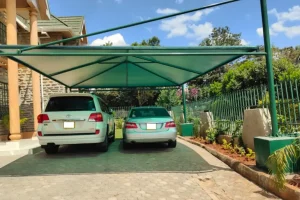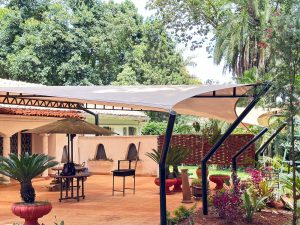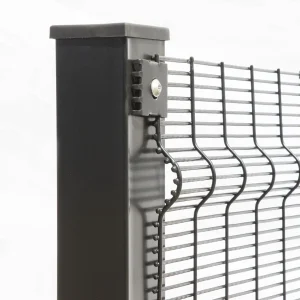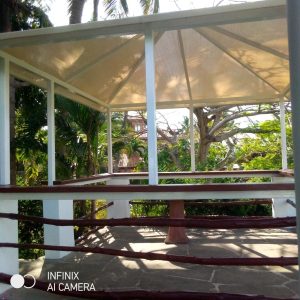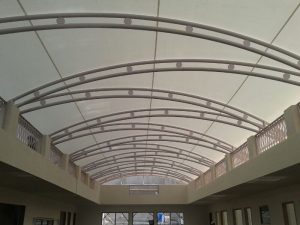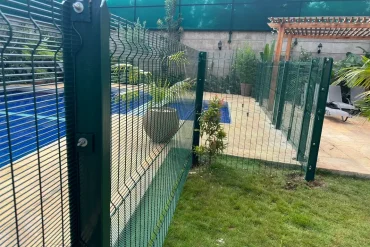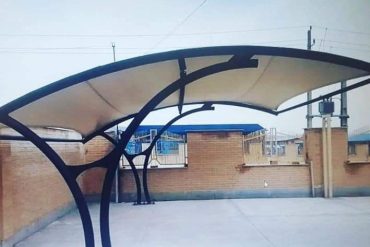Table of Contents
ToggleShade Canopies in Kenya: Designs, Prices & Benefits | Diamond Canopies
Introduction
Shade canopies are increasingly sought after across Kenya—for homes, schools, commercial buildings, walkways, and recreational spaces. They provide relief from the harsh sun, protect structures, and add aesthetic value. At Diamond Canopies East Africa, we specialize in designing and installing shade canopy solutions that are durable, stylish, and tailored to local climate.
In this article, you’ll learn:
-
What shade canopies are and how they differ from other shade structures
-
The common design types of shade canopies in Kenya
-
Key benefits and uses
-
Cost considerations and price ranges
-
How to choose the right materials and supplier
-
Maintenance tips and things to avoid
-
Why Diamond Canopies is a top choice
Throughout, I’ll include internal links to relevant pages to improve SEO and cross-reference services.
What Is a Shade Canopy?
A shade canopy is a structure designed to cover an area (partially or fully) using a roof or overhead covering—typically fabric, polycarbonate, or metal—supported by a frame. Unlike open shade sails, canopies often offer more robust protection against sun, rain, and moderate weather, depending on the design.
Shade canopies can be freestanding, attached to buildings, used to shade walkways, outdoor seating areas, shops, patios, pool sides, and more. They bridge the gap between lightweight covers and fully rigid roofing.
At Diamond Canopies, shade canopies are part of our overall shade and canopy solutions, complementing offerings like residential & commercial car parking shades, shade sails, pergola designs, and more.
Uses & Applications of Shade Canopies in Kenya
Shade canopies are versatile and used in many settings:
-
Residential use: patios, courtyards, decks, gardens
-
Commercial / retail: storefront awnings, restaurant outdoor seating, walkways
-
Educational institutions: shade for open classrooms, library outdoor spaces
-
Recreational & hospitality: cafés, poolsides, resort terraces
-
Public & civic spaces: bus stops, transit zones, community waiting areas
-
Agricultural / nursery protection: shade for nurseries, seedbeds
They often integrate with fencing, cantilevers, or shading systems. You may also combine canopies with shade sails or clear view fencing for holistic outdoor design.
Types & Designs of Shade Canopies
Shade canopies come in many forms. Below are common styles you can consider:
| Canopy Type | Description | Ideal Use Cases |
|---|---|---|
| Flat / Sloped Canopies | Simple roof planes, either flat or gently sloped for drainage. | Walkways, patios, verandas |
| Gable / Pitched Canopies | Two-sided sloping roof with a peak | Better rain runoff; terraces and entrances |
| Hip / Pyramid Canopies | Slopes on multiple sides meeting at a ridge | Centre courtyards, gazebos |
| Curved / Arched Canopies | Curved roof lines, often in arch forms | Modern architectural aesthetic |
| Cantilevered Canopies | Supported from one side, creating overhangs | Spaces needing minimal obstructions underneath |
| Retractable / Partial Canopies | Sections that can open or retract | Flexible shading control |
| Hybrid Canopies | Combination of rigid panels and fabric elements | Balanced aesthetics and function |
Each design has trade-offs in cost, installation complexity, drainage, and appearance.
Benefits of Shade Canopies
Investing in shade canopies delivers multiple advantages:
-
Sun & UV Protection
They reduce direct exposure to UV rays, protecting people, furniture, and finishes. -
Rain Cover
Sloped or rigid canopies can divert rain, allowing outdoor spaces to stay usable. -
Comfort & Temperature Control
They lower heat buildup, making shaded zones cooler and more pleasant. -
Enhanced Ambience & Aesthetics
Well-designed canopies elevate property look and perceived value. -
Extended Use of Outdoor Spaces
Spaces remain useful for longer hours, even in sun or light rain. -
Protection for Furnishings & Surfaces
Furniture, tiles, wood, and finishes last longer when shielded. -
Energy Savings
Shading adjacent windows or walls reduces solar heat load in buildings. -
Flexible Coverage
Canopies can be tailored in size, shape, and coverage area.
Cost Factors for Shade Canopies in Kenya
The cost depends on multiple variables. Below are key cost determinants:
-
Material quality: premium fabrics, coatings, metals cost more
-
Design complexity: curved, arched or hybrid shapes raise labour
-
Size / coverage area: larger canopy means more material & labour
-
Frame & structural support: thickness of steel, anchoring, foundations
-
Drainage & waterproofing needs: designs that must shed water add cost
-
Site conditions: uneven terrain, access, groundworks
-
Finishing & customization: colours, branding, special features
-
Transport & labour rates: distance from workshop, skill required
Because of these variables, quotes can vary widely even for what seems like similar coverage.
Approximate Price Ranges
Below are indicative cost bands (as of 2025) for shade canopies in Nairobi / Kenya. These are ballpark figures—exacts require site survey.
| Type / Size | Approx Cost (KES) | Notes |
|---|---|---|
| Small canopy (e.g. patio 3m x 4m) | 70,000 – 130,000 | Simple flat or sloped design |
| Medium roof canopy (5m x 6m) | 180,000 – 300,000 | Pitched or hip structure |
| Walkway canopy (per metre) | 8,000 – 15,000 | Linear covers over paths |
| Curved / arch canopy | 200,000 – 400,000+ | More premium design |
| Hybrid / retractable version | 350,000 – 700,000+ | Complexity and mechanical parts raise cost |
Materials & Specifications
Selecting good materials is critical. Here are recommended specs to ensure durability and performance:
-
Frame: galvanized steel or powder-coated steel to resist corrosion
-
Canopy membrane: UV-stabilized HDPE, PVC-coated textile, polycarbonate panels
-
Fasteners & fittings: stainless steel bolts, heavy-duty tension cables
-
Drainage: gutters, slopes, flashing to channel rainwater
-
Foundations: concrete footings sized per load and soil type
We often recommend coatings or treatments that extend lifetime in Kenya’s sun, wind, and rain.
Installation Process
Our standard installation process at Diamond Canopies includes:
-
Site assessment & measurement
-
Design proposal & costing with client input
-
Structural engineering / permit compliance (if needed)
-
Fabrication of frame & manufacturing of canopy membrane
-
Groundworks / foundations / leveling
-
Erection & now anchoring of canopy
-
Testing, finishing, water testing & client walkthrough
Timelines vary—small canopy could take a few days; larger covers may take 1–2 weeks or more.
Maintenance & Longevity
To keep shade canopies performing well:
-
Clean surface periodically (mild soap + water)
-
Check tension and adjust cables
-
Inspect for tears or damage, patch promptly
-
Check bolts and fasteners annually
-
Recoat steel surfaces if finish degrades
-
Avoid sharp objects or heavy loads on the canopy
With good upkeep, high-quality shade canopies can last 10 to 15+ years depending on exposure.
How Shade Canopies Compare to Shade Sails & Other Options
| Feature | Shade Canopy | Shade Sail |
|---|---|---|
| Rigidity / stability | More structural, better for rain | More flexible, better for light shading |
| Rain handling | Better, especially for sloped or rigid types | Dependent on fabric; may sag under water |
| Cost | Higher, especially for complex designs | Lower per unit area for simple sails |
| Aesthetic flexibility | Many design options, but somewhat heavier | Very flexible, creative shapes |
| Maintenance | Moderate but durable | Fabric may need more care / replacement over time |
You may also integrate shade canopies with shade sails, car parking shades, pergolas or tensile structures for cohesive outdoor design.
Why Work with Diamond Canopies
-
Proven experience in building shade systems across Kenya
-
Custom design and flexible solutions
-
Use of quality materials suited to Kenyan climate
-
Transparent pricing and quotations
-
After-sales support and maintenance services
-
Ability to deliver across regions — Nairobi, Mombasa, Kisumu, Nakuru, etc.
Explore more of our services at:
Frequently Asked Questions (FAQs)
Q1: Can shade canopies handle heavy rain in Kenya?
Yes—if designed with proper slope, drainage, and structural support, canopies can shed water effectively.
Q2: Are permits needed for canopies in Nairobi?
For larger or rigid structures, yes. Diamond Canopies helps advise and manage permit processes as needed.
Q3: What is the typical lifespan of a canopy?
With good materials and maintenance, 10–15 years is common; steel frames often last longer.
Q4: Can I get custom colours or prints?
Yes. Fabrics and frames can be customized to match brand, style, or design requirement.
Q5: How quickly can installation happen?
For moderate sizes, few days; for large or complex canopies, one to two weeks, depending on site conditions.
Summary & Call to Action
Shade canopies in Kenya are a smart solution to protect people and property from sun and rain while enhancing outdoor space utility and aesthetics. Whether it’s a canopy for a restaurant patio, walkway, veranda, or multi-use zone, the right design choice matters.
If you need reliable design, fabrication, and installation of shade canopies, Diamond Canopies East Africa Limited is ready to help.
📞 Call / WhatsApp: +254 722 549 465
📧 Email: info@diamondcanopies.com
🌍 Visit: Contact Diamond Canopies
Let us help you realize your ideal shaded space with quality, professionalism, and Kenya-appropriate design.



